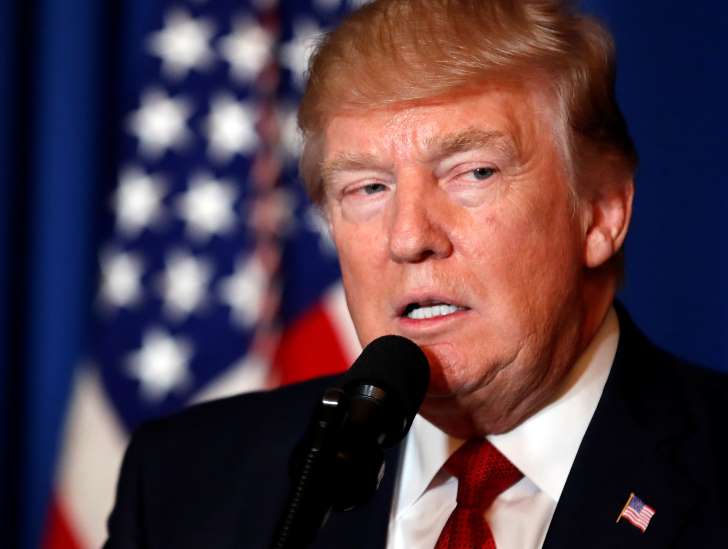Trump… a Chance to Put a New Long-term Vision
Michael Doran/The New York Times/May 20/17
During his campaign, Donald Trump’s Middle East policy seemed to begin and end with his vow to “bomb the hell” out of ISIS — a pledge that played well with his base but unsettled establishment foreign policy experts, who worried that the collateral damage would include everything else America has been trying to build in the region.
The establishment was giving itself too much credit: Our policies in the Middle East have been blowing themselves up for a good while. As Mr. Trump embarked on his first foreign trip, the first stop being Saudi Arabia, he has a chance to put in place a new long-term vision. In fact, the outlines of one are already in place. Despite the controversies at home, Mr. Trump may come away with a legacy-cementing achievement: a Trump Doctrine for the Middle East. The Middle East is complex, but Mr. Trump’s predecessors stumbled for a singular reason: the rise of Iran. As a senior official in the George W. Bush administration, I saw firsthand how President Bush’s democracy project in Iraq diverted attention from countering Iran and its proxies. Mr. Bush seems to have believed that a robust democracy in Iraq would serve simultaneously as a bulwark against extremism and Iranian power. In the end, Iran slipped into Iraq under Mr. Bush’s nose, subverted the project, and recruited proxy militias to promote its interests.
Mr. Bush let Iran in by miscalculation. President Barack Obama, by contrast, embraced Iranian ascendancy with open arms — and not just in Iraq, but in Syria as well. Mr. Obama dropped efforts to contain Iran and sought a nuclear accord that would allow the West to normalize relations because he was convinced that recognition of an Iranian sphere of influence would persuade Tehran to function as a partner in stabilizing Iraq and Syria. This was another miscalculation, and it led directly to the Russian-Iranian military alliance in Syria. Mr. Obama, like Mr. Bush before him, put a lot of effort into resolving the Palestinian-Israeli conflict — a worthy but useless undertaking that diverted them further from addressing Iran’s regional ascent and, later, Russia’s. We still don’t know the full details of Mr. Trump’s approach to the Middle East, but his hard-nosed ethos and willingness to question foreign policy dogmas offer an opportunity, in principle, to dispel several fallacies that led to these strategic blunders.
First, it is false that American “soft power” is the key to stabilizing the region. Our ideals, such as promoting democracy, will work to our advantage only if we first restore order — a project that rests on American hard power. What’s more, the use of force is not inherently counterproductive. Look at Russia’s campaign in Syria, which shows that in the hands of a good tactician like President Vladimir Putin, military superiority produces results.
Next, It’s a fallacy to imagine that we can create a Middle East without enemies. And it’s just as wrong to assume we can cleverly pull Russia away from Iran in Syria. The tensions between them are insignificant compared with their shared interest in propping up the Bashar al-Assad regime and eroding American influence.
Finally, the Palestinian-Israeli conflict is not the center of gravity in the Middle East, nor is it ripe for solution. It is not clear that Mr. Trump recognizes all of these fallacies. If he does, he will be far ahead of the game. But recognizing mistakes is just the first step. Step 2 requires rejecting the temptation, to which Mr. Obama succumbed, of defining the defeat of ISIS as the pre-eminent strategic goal. If Mr. Trump destroys the group, but fails at the same time to build a stabilizing regional coalition, his victory will be very short-lived. The next ISIS will rise from the rubble, and Russia and Iran will exploit the ensuing chaos. The third step is to build that coalition. Jordan, Egypt and the United Arab Emirates can help, but only American allies, mainly Saudi Arabia, can project power.
By embarking for the region Mr. Trump is clearly signaling an appreciation of this elemental fact. He must now build on that fact to develop a Trump Doctrine, based on shoring up traditional allies against Iran. Such a plan, built on painstaking coalition building and maintenance, isn’t glamorous or inspiring. But good statesmanship requires recognizing the limits of what is possible. The choices in the Middle East are between very bad and much worse. Mr. Trump promised us steely-eyed realism. Here’s hoping he delivers on that pledge.






















